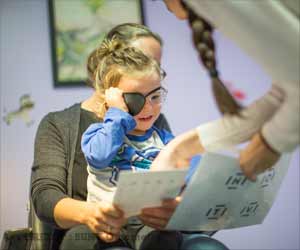Is your child suffering from lazy eye? If yes, don’t worry. Bright outdoor lights can now help treat lazy eye (amblyopia) in children.

‘Is your child suffering from lazy eye? If yes, don’t worry. Bright outdoor lights can now help treat lazy eye (amblyopia) in children.’
Read More..




While past research indicated that amblyopia, also known as lazy eye, equally affects the brain pathways signaling bright and dark features in an image, Ms. Pons Torres found that amblyopia affects the perception of bright features more than dark features. Her research also shows that, as amblyopia becomes more severe and the images projected in the eye lose detail, bright targets become increasingly difficult to discern. This recent work opens the possibility to treat amblyopia by strengthening weakened brain pathways that signal bright stimuli.Read More..
Amblyopia is a developmental problem of the brain that compromises visual acuity in two to five percent of children around the world. Children typically develop amblyopia in one eye, and the current treatment is to patch the healthy eye to force the lazy eye to work harder.
Despite being in use for centuries, such patching treatments are problematic. Amblyopia may go undiagnosed for years, and patching is less effective in mature brains, there is a high risk of amblyopia recurrence after patching interruption, and low compliance remains prominent as children often do not like to wear the eye patch and tend to remove the treatment when unsupervised.
Previous work from the Alonso lab published in the Journal of Vision by Pons, et al. has shown that low light and optical blur (e.g., reading indoors under dim light) affect the perception of bright targets more than dark targets. Both low light and optical blur are risk factors in myopia, or nearsightedness, which is another developmental problem affecting visual acuity.
Another recent study from the Alonso team published in Cell Reports by SUNY Optometry postdoctoral researcher Dr. Reece Mazade, et al. found that these pathways are best stimulated with large bright, long-lasting targets, particularly sky patches, which are bright, large and slow-moving.
Advertisement
Source-Eurekalert














